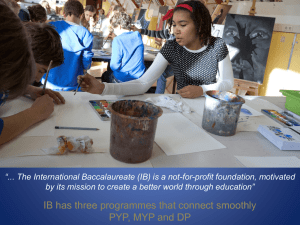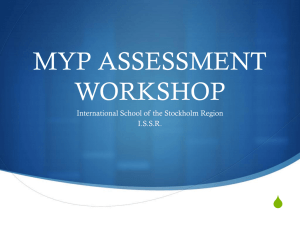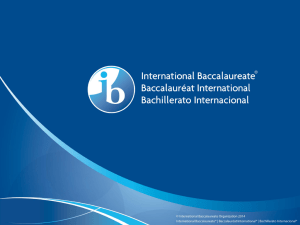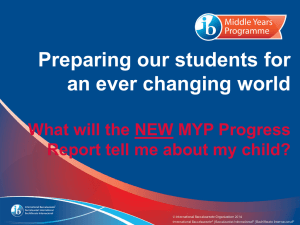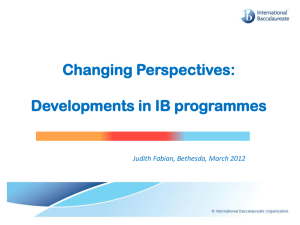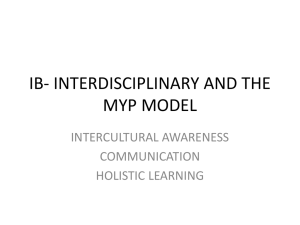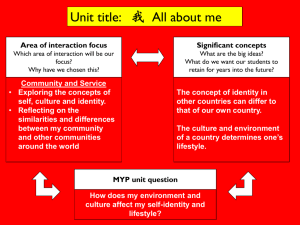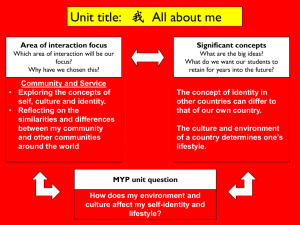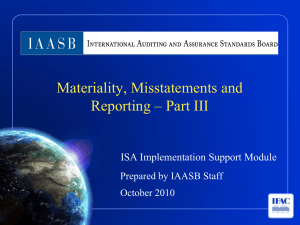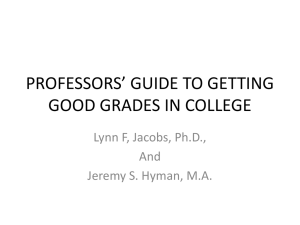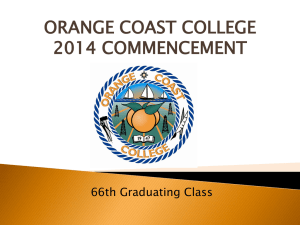Slide 0 - South Carolina IB Schools
advertisement
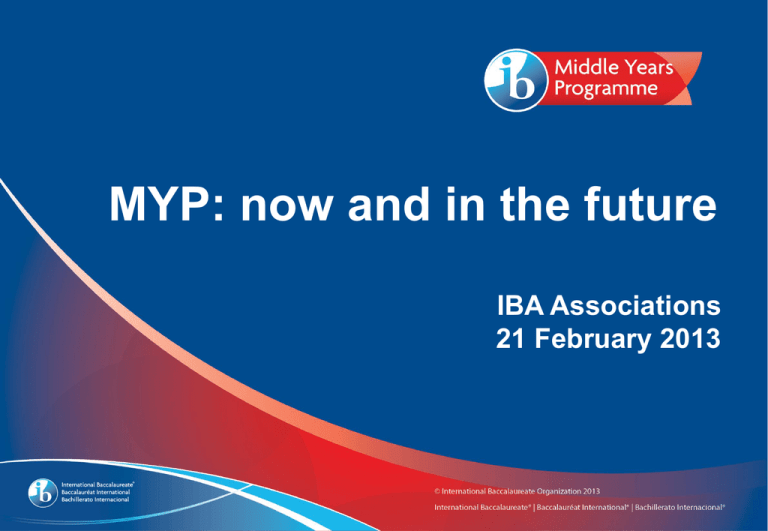
MYP: now and in the future IBA Associations 21 February 2013 MYP Now Education for 11-16 year olds When you were this age: • What did you like about school? • What did you not like about school? 2 Historical Background of MYP • began in 1980’s: initiative of International Schools Association (ISA) known as ISAC • 1994 taken over by IBO • since 1994: major curriculum development and growth Page 3 What influenced MYP? 4 What influenced the MYP? UNESCO Learning, The Treasure Within 1996 Simply speaking, the Commission felt that education throughout life is based upon four pillars: • learning to know, • learning to do, • learning to live together and • learning to be. 5 What does MYP bring? Rewards • Meaningful learning • Assessment which promotes learning • Students • Rigour and relevance • Generates a powerful • Collaborative school professional learning community community • Align with local requirements • Encourages innovation and creativity High expectations • Teachers Page 6 MYP around the world February 2013: 1000 schools (in 90 countries) IBAEM: 163 schools AMERICAS: 702 schools ASIA PACIFIC: 135 schools 7 The MYP programme model 8 Contextual learning Approaches to Learning Community and Service Currently five areas of interaction shape contextual learning in the MYP Human Ingenuity Health and Social Education Environment 9 MYP assessment: Formative and summative 10 Conceptual understanding Stage 1: Integrate significant concept, area of interaction and unit question Area of interaction focus Significant concept(s) Which area of interaction will be our focus? Why have we chosen this? What are the big ideas? What do we want our students to retain for years into the future? Environments: Students will become aware of their interdependence with the world. Students will appreciate how they can affect local ecosystems, and how local ecosystems can affect them. Ecosystems can be both fragile and resilient. With even modest efforts, disturbed ecosystems can be restored. MYP unit question How Tough is Mother Nature? 11 Piece of literary fiction Presentation of a business, management or organizational plan Invention or specially designed object/system Written piece of work on special topic Types of PP Presentation of a new student/community organization Original science experiment Original work of art Presentation of a special event 12 What do you think? If you had been in the MYP, how might this have made a difference in how you experienced your 11-16 schooling? 13 So why change it? 14 MYP: the next chapter Big picture MYP: the next chapter challenges... MYP: the next chapter solutions... Subject Assessment model = Recognition Facilitate improved integration Innovative concept based assessment Contextual learning areas group flexibility MYP4-5 New PP moderation = global consistency EVOLUTIONARY and INNOVATIVE Development of MYP for students aged 11-16 Concept based curriculum Core to continuum Greater guidance and support Innovative eAssessment options Emphasis on ‘Approaches to Learning’ MYP: the next chapter MYP, current programme model MYP, first programme model Embrace the future by valuing the past MYP: the next chapter Concepts Contexts ATL Unit plans People travel to wonder at the height of mountains, at the huge waves of the sea, at the long courses of rivers, at the vast compass of the ocean, at the circular motion of the star; and they pas by themselves without wondering. St. Augustine MYP: the next chapter Increased student engagement MYP concept based curriculum: Encourages learning and deep understanding of important concepts Increases motivation for learning, students develop attributes of the Learner Profile to become lifelong learners Provides better alignment across all IB programmes Builds on conceptual framework in PYP and is best preparation for DP/IBCC and further education MYP: the next chapter Approaches to Learning (ATL) ATL develops the learning skills to best prepare for success in DP, IBCC and beyond ATL provides greater alignment between PYP, MYP, DP and IBCC MYP: the next chapter Concept based curriculum MYP: the next chapter is better aligned with PYP, DP and the IBCC MYP: the next chapter Increased teacher support Concepts in guides – greater guidance and support for teachers TSM’s – greater guidance for teachers using new media Draft guides piloted during 2011/12 Existing MYP Schools, workshop leaders and teachers will be guided, step by step, throughout the process MYP Unit plans • CONNECT: How are the ideas and information presented CONNECTED to what you already know? • EXTEND: What new ideas did you get that EXTENDED or pushed your thinking in new directions? • CHALLENGE: What is still CHALLENGING or confusing to you to get your mind around? What questions, wonderings or puzzles do you know have? MYP: the next chapter Preparation for DP MYP preparing for DP: 2012 data 2012 Result DP All candidates MYP Pass rate 78.4% 83.8% Students Achieving 40+ % gaining bilingual diploma 6.6% 7.4% 24.5% 40.0% MYP preparing for DP: 2012 data Total score distribution 2012 35.00% 30.00% 25.00% 20.00% All candidates Ex MYP 15.00% 10.00% 5.00% 0.00% <24 24-29 30-34 35-39 40-45 MYP preparing for DP: EE in 2012 Extended Essay - MYP vs All 45.00% 40.00% 35.00% 30.00% 25.00% MYP 20.00% All candidates 15.00% 10.00% 5.00% 0.00% A B C D E Aligning MYP-DP: Future models International Schools’ Assessment (ISA) • Assesses reading, mathematics and writing (narrative and opinion). • Assesses grades 3 to 10. • A mix of multiple-choice and open-ended questions in reading and mathematics, and two essays in writing. • Aligned with the Organisation for Economic Cooperation and Development’s (OECD) Programme for International Student Assessment (PISA) construct. Performance of IB and non-IB students IB compared to non-IB student ISA scores: Phase II 10 Exp. Writing 9 Nar. Writing Grades 8 7 Reading 6 Math 5 4 3 -0.2 -0.1 0 0.1 0.2 Effect size 0.3 0.4 0.5 MYP: the next chapter Assessment Subject group flexibility Collaborative project Transition MYP: the next chapter Assessment model MYP : the next chapter Assessment MYP : the next chapter Assessment MYP: the next chapter Timeline MYP: the next chapter Piloting the subject group guides MYP: the next chapter Subject choice Subject group flexibility –possibility for student choice with a minimum of six subject groups in the last two years Ease of implementation for schools working in state or national systems Creates opportunities ahead of DP/IBCC for students to specialize – with additional languages, sciences, arts or vocational courses MYP: the next chapter Changes to subject groups Current MYP Mathematics MYP : the next chapter, teaching from September 2014 Arts Sciences Language A Language B Humanities Language and literature Language acquisition Individuals and societies Mathematics Arts Personal Project Technology Physical Education Design Physical and health education Sciences Personal Project MYP: the next chapter Professional Development IB Professional Development is the best preparation for MYP: the next chapter Category 1 and 2 workshops scheduled to match November prepublications of subject area guides and MYP: the next chapter, Principles into Practice New category 3 workshops offered to schools in 2014, will include •Approaches to learning •Socio-emotional learning •A trilogy of assessment workshops MYP: the next chapter Transition MYP: the next chapter Transition timeline - 2013 • MYP Coordinators Handbook includes new rule for subject group flexibility in MYP4-5 August September • OCC: Pre-published draft unit planner • OCC: Publication of teacher support material for approaches to learning, inquiry and service October • OCC: Pre-published draft guides for all subjects, personal projects and new interdisciplinary guide November OCC: Transition document for schools indicating timeline for implementation of the new requirements from September 2014 MYP: the next chapter Transition timeline - 2014 January • OCC: Publication of revised Programme standards and practices and Guide to programme evaluation and self-study questionnaire • OCC: pre-Published draft MYP: from principles into practice • Revised applications for candidacy and authorization available online February • Last submission for subject moderation northern hemisphere April OCC: Publication of subject guides, personal project guide, new interdisciplinary guide and MYP: From principles into practice May • Registration of students for compulsory personal project moderation and optional MYP eAssessment in June 2015 October • OCC: Publication of teacher support material for subject guides and personal project December MYP: the next chapter The essentials... MYP: the next chapter will launch in schools in September 2014 First assessment will occur in June 2015 Existing MYP schools, workshop leaders and teachers will be guided, step by step, throughout the process IB Professional Development is the best preparation for MYP: the next chapter teaching MYP: the next chapter Keep up to date Online curriculum centre (OCC) find and post messages about the MYP using: @IBMYP for instant updates and MYP news Questions? 47 September 2012 Performance comparison between IB school students (PYP and MYP) and non-IB school students on the International Schools’ Assessment (ISA) Phases I and II Australian Council for Educational Research 2010 and 2012 Study design • Phase I: 2007/2008/2009 ISA sittings • • • • IB students = 23,515; non-IB students = 14,317 Subject and regional analyses on four ISA assessment areas PISA benchmark analysis Top-performing IB schools analysis • Phase II: 2010/2011 ISA sittings • • >28,000 students, 121 schools, 50 countries Replication of phase I using more recent data, with closer examination of particular findings: •the impact of number of programmes and length of authorization • • • Country analysis in Asia (new) Multilevel analysis of school variance (new) Student questionnaires (grades 5, 6, 8 and 9) (new) International Schools’ Assessment (ISA) • Assesses reading, mathematics and writing (narrative and opinion). • Assesses grades 3 to 10. • A mix of multiple-choice and open-ended questions in reading and mathematics, and two essays in writing. • Aligned with the Organisation for Economic Co-operation and Development’s (OECD) Programme for International Student Assessment (PISA) construct. • Student well-being questionnaires (grades 5, 6, 8 and 9) (Phase II) • Four primary-year dimensions; seven secondary-year dimensions. Key findings • On a global level, PYP and MYP students outperformed non-IB students in all four assessment areas in majority of grades. • Strongest effects noted in grade 10. • Grades 9 and 10 IB students averaged significantly higher than OECD countries’ PISA means in math and reading. • Less variation between IB schools than non-IB schools. • High proportions of agreement among PYP and MYP students across all dimensions of the student well-being questionnaires. • • 89% of grade 5 students agreed their schools provided a supportive learning environment, and school experiences were useful preparation for other aspects of life. About 84% of grade 9 students agreed they were engaged with their work and challenged to attempt more complex problems. Performance of IB and non-IB students IB compared to non-IB student ISA scores: Phase II 10 Exp. Writing 9 Nar. Writing Grades 8 7 Reading 6 Math 5 4 3 -0.2 -0.1 0 0.1 0.2 Effect size 0.3 0.4 0.5 IB grade 9/10 students on PISA benchmark Reading 9 10
